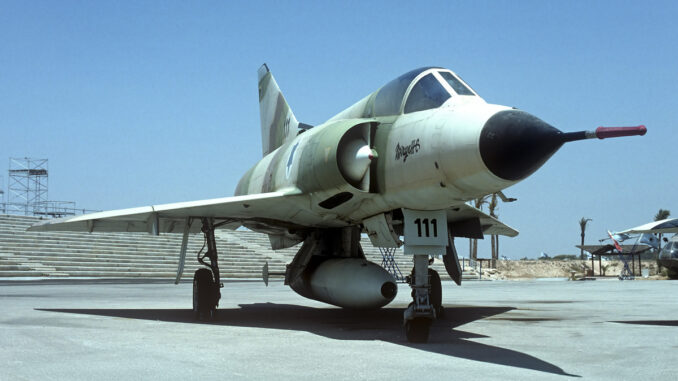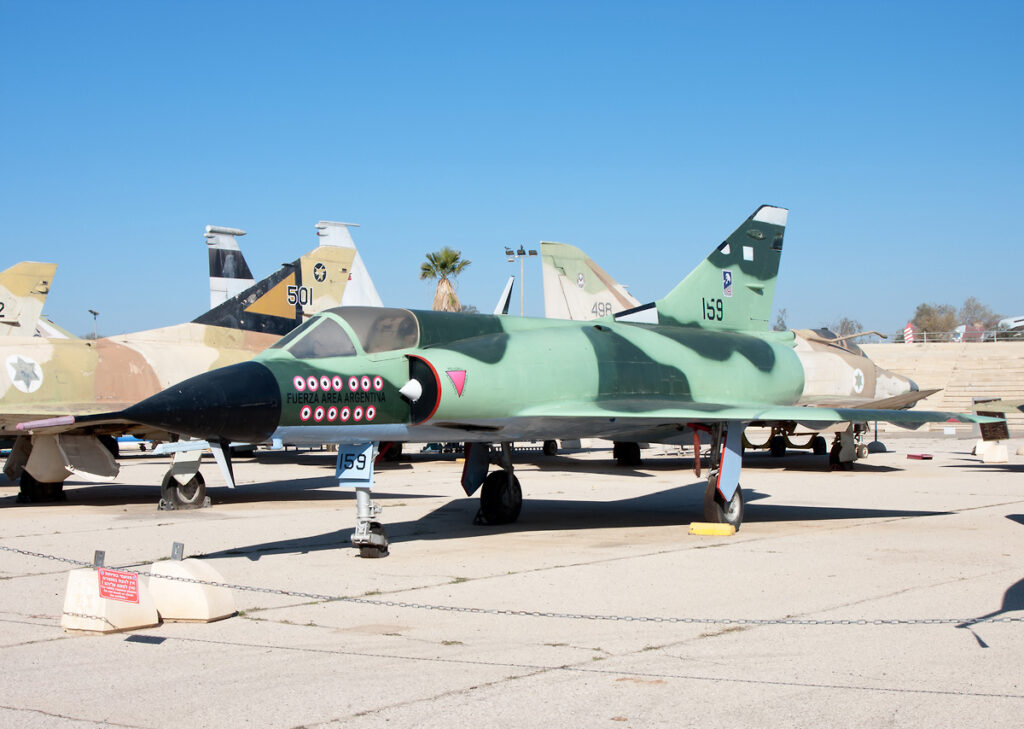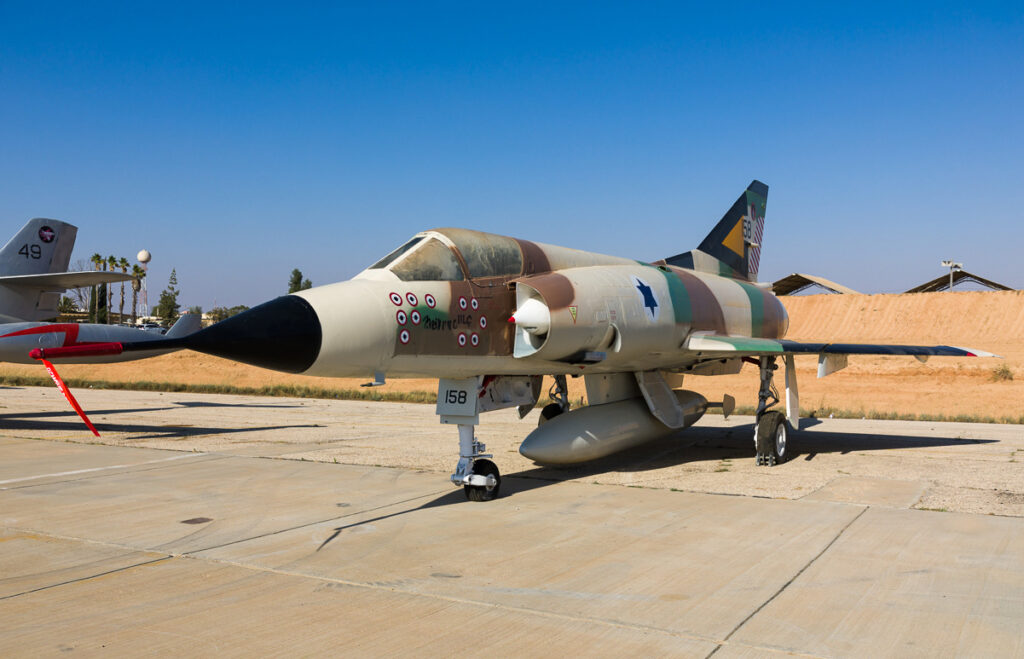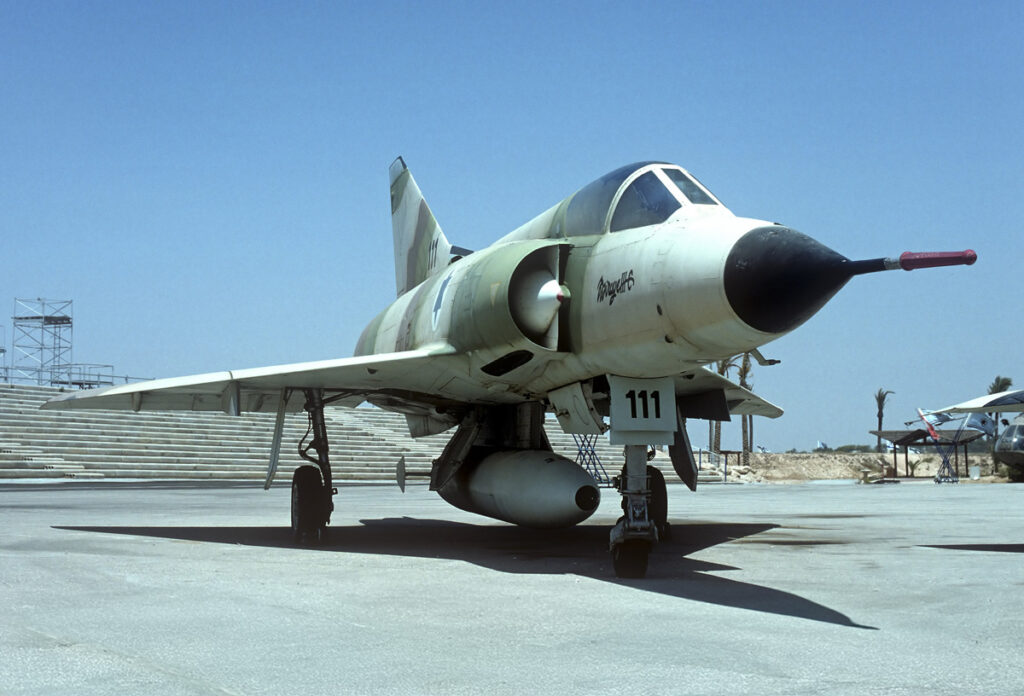
An analysis of Israel’s use of the Mirage III in the Six-Day War, its tactical impact and strategic consequences.
The Mirage III, a fighter aircraft developed by Dassault Aviation, played a crucial role in the Six-Day War in 1967. Used by the Israeli air force, it was instrumental in establishing air superiority in the early hours of the conflict. Its speed, manoeuvrability and effectiveness in air-to-air combat enabled it to neutralise the opposing air forces, contributing to Israel’s rapid victory. An analysis of its use reveals not only the operational successes, but also the challenges encountered, offering valuable lessons for modern military aviation.

Background to the Six-Day War
The Six Day War, which took place from 5 to 10 June 1967, was a major conflict between Israel and a coalition of Arab countries including Egypt, Jordan and Syria. The conflict was rooted in a series of growing geopolitical tensions in the Middle East, marked by territorial rivalries and political disputes. Israel’s Arab neighbours, unhappy with the state’s existence, pledged to destroy it, leading to military escalation.
Israel, aware that a coordinated attack was imminent, decided to take the initiative by launching a pre-emptive strike called Operation Focus (Moked). The aim of this attack was to neutralise the air forces of enemy countries by striking their air bases first. The success of this operation was essential to ensure the security of Israel, surrounded by enemy powers. In this context, the Mirage III aircraft, already renowned for its capabilities, was chosen as one of the main instruments of this offensive.
Presentation of the Mirage III
The Mirage III is a supersonic fighter developed by the French company Dassault Aviation. It entered service in the early 1960s, and is a single-engine aircraft with a delta wing that gives it great manoeuvrability and enables it to reach very high speeds, in excess of Mach 2. With a length of 15 metres and a wingspan of 8.22 metres, the Mirage III is designed for air superiority, interception and ground support missions.
The Israeli Air Force (IAF) acquired several Mirage IIIs (known locally as Shahaks) in the early 1960s. These aircraft were adapted to Israel’s specific requirements, with modifications notably to the navigation and communications equipment. The Mirage III, with its Atar 9B engine, offered maximum power of 60 kN on afterburner, enabling it to climb rapidly to intercept enemy aircraft at high altitude.

Mirage III missions during the war
The Mirage III’s role in the Six-Day War was central to Operation Focus. In the early hours of 5 June 1967, almost 200 Mirage IIIs, accompanied by other types of Israeli aircraft, took part in simultaneous strikes against Egyptian air bases. The aim was to destroy enemy aircraft on the ground before they could take off and pose a threat to Israel.
Thanks to their speed and ability to fly at low altitude, the Mirage IIIs surprised the Egyptian air defences. In less than three hours, nearly 300 Egyptian aircraft were destroyed, mainly on the ground. This attack enabled Israel to gain a decisive advantage by gaining control of the skies from the very first day of the conflict. After neutralising the Egyptian air force, the Mirage IIIs were redeployed to attack Syrian and Jordanian forces, contributing to Israel’s victory on several fronts.
In addition to bombing and interception missions, the Mirage IIIs also carried out reconnaissance missions, monitoring enemy troop movements and providing crucial information to commanders on the ground. These missions maximised the effectiveness of Israeli air strikes and minimised losses.
Mirage III successes and challenges
The successes of the Mirage III during the Six-Day War are undeniable. By destroying a large part of the enemy air force in the early hours of the conflict, these aircraft not only ensured Israeli air superiority, but also demoralised the opposing forces. The Mirage IIIs demonstrated their technological superiority, outperforming the Soviet MiG-21s used by the Arab forces, both in terms of manoeuvrability and interception capabilities.
However, despite these successes, the Mirage III was not without its faults. Its limited range (around 1,200 km) sometimes forced Israeli pilots to carry out missions at the limits of the aircraft’s autonomy, particularly during operations against Syria. In addition, the lack of in-flight refuelling capability at the time limited the duration and range of missions, which could have been a handicap in a longer conflict or against a better-prepared enemy.
Another challenge faced by the Mirage III was its weapons capability. Although highly effective in air-to-air combat, the aircraft had limited ground strike capability, especially when compared with other fighter aircraft. This led the Israeli army to combine the Mirage III with other aircraft, such as the A-4 Skyhawk, for more intensive close support missions.

Strategic and technical consequences
The use of the Mirage III during the Six-Day War had major strategic consequences for Israel and for the military aeronautics industry worldwide. On the one hand, this war demonstrated the crucial importance of air control in modern conflicts, a lesson that other nations quickly incorporated into their military doctrines.
For Israel, the success of the Mirage III reinforced confidence in its military capabilities, while underlining the need for cutting-edge technology to survive in a hostile environment. This led Israel to invest more in the development of its aeronautical industry, later resulting in the creation of indigenous aircraft such as the Kfir, derived from the Mirage III.
Internationally, the performance of the Mirage III consolidated Dassault Aviation’s reputation as a major player in the fighter aircraft industry. It also strengthened diplomatic and military relations between France and Israel, although these cooled after the war, not least because of the French arms embargo in 1969. Nevertheless, the Mirage III continued to be used by many armies around the world, influencing the design of modern fighter aircraft.
The Mirage III was a decisive tool in Israel’s victory in the Six Day War. This aircraft, with its advanced technical capabilities for its time, enabled Israel to gain a decisive advantage by rapidly neutralising enemy air forces. Although not without its faults, the Mirage III marked a turning point in the history of military aviation, demonstrating the importance of air superiority in modern conflicts and influencing the military strategies and technological developments of the following decades.
War Wings Daily is an independant magazine.